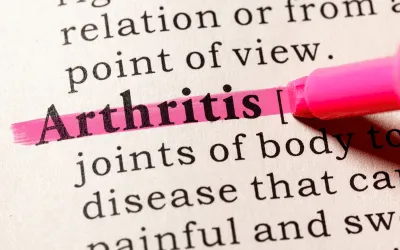About Arthritis
As the nation’s #1 cause of disability, arthritis affects nearly 60 million adults and 300,000 children. Over 100 types of arthritis and related conditions damage the joints and often other organs.
How can we assist you?
Helpful Tools for You

Genetic Breakthrough: 13 Newly Identified Genes May Hold the Key to Osteoarthritis Prevention
Osteoarthritis (OA) is the most common form of arthritis, affecting more than 32 million Americans. Characterized by joint pain, stiffness, and the gradual breakdown of cartilage, OA can make even simple movements feel difficult. While age, injury, and wear-and-tear have long been associated with OA, new research is shining a spotlight on a deeper root cause: our genes.
In a major breakthrough, scientists at the UNC Thurston Arthritis Research Center have discovered 13 genes linked to osteoarthritis risk, offering fresh insight into how this chronic condition develops and progresses.
What the Study Revealed
Using donated joint tissue samples, researchers explored how certain genes behave in areas affected by OA. Their findings revealed that:
🔹 Nearly 50% of OA risk is linked to genetics, not just lifestyle or age.
🔹 Six of the 13 genes identified were previously unknown to scientists, opening up brand-new research possibilities.
🔹 The research focused on how these genes contribute to joint tissue loss and cartilage damage over time.
This study represents a major leap forward in our understanding of osteoarthritis at the molecular level.
Why Genetic Research Matters
Until now, OA treatment has primarily centered on symptom management: pain relief, physical therapy, and in severe cases, joint replacement surgery. But by identifying the genes that contribute to OA, scientists are paving the way for a new generation of targeted therapies that may:
💪 Slow or stop cartilage breakdown
💪 Prevent joint damage before symptoms even start
💪 Personalize treatment based on an individual’s genetic profile
What This Means for the Future
This discovery is more than just a scientific milestone—it’s a signal of hope. As we learn more about the genetic drivers of osteoarthritis, we move closer to early detection tools and disease-modifying therapies that could transform the way OA is treated.

Effects of Arthritis

Cause of Disability
In the United States, 23% of all adults, or more than 54 million people, have arthritis. It is a leading cause of work disability, with annual costs for medical care and lost earnings of $303.5 billion.

Workforce Effects
Sixty percent of US adults with arthritis are of working age (18 to 64 years). Arthritis can limit the type of work they are able to do or keep them from working at all.

Global Impact
In fact, 8 million working-age adults report that their ability to work is limited because of their arthritis. For example, they may have a hard time climbing stairs or walking from a parking deck to their workplace.
Promoting Interventions That Reduce Arthritis Pain
American Arthritis Foundation recognizes several proven approaches to reduce arthritis symptoms:
Be active. Physical activity—such as walking, bicycling, and swimming—decreases arthritis pain and improves function, mood, and quality of life. Adults with arthritis should move more and sit less throughout the day. Getting at least 150 minutes of moderate-intensity physical activity each week is recommended.
Protect your joints. People can help prevent osteoarthritis by avoiding activities that are more likely to cause joint injuries.
Talk with a doctor. Recommendations from health care providers can motivate people to be physically active and join a self-management education program. Should your arthritis be interfering with your activities of daily living you may be a candidate to receive many new treatments, and learn how to reverse the arthritis condition.
Have a question?
We're Here to Help
By providing my phone number, I agree to receive text messages from the business.


